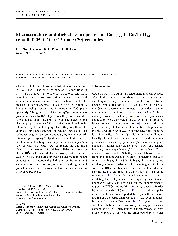摘要
Influence of bismuth substitution on calcium site in CaCu3Ti4O12 has been investigated. Compositions of Ca1-3/2xBixCu3Ti4O12 (x = 0, 0.05, 0.10, 0.15 and 0.20) were fabricated by solid-state sintering method. Crystal structure is remained cubic. X-ray diffraction indicates the presence of secondary phase of CuO in CCTO ceramics. Bismuth doping restrains the formation of CuO phase apparently. The grain size of CaCu3Ti4O12 ceramics was greatly decreased by Bi3+ doping, resulting from the ability of bismuth to inhibit the grain growth. The dielectric and electric properties of CCTO ceramics were found to be influenced by bismuth doping. The fitting results of the complex impedance spectra showed an increase of the resistance of grain and grain boundary by bismuth substitution. Ca0.70Bi0.20Cu3Ti4O12 showed the highest dielectric constant in the low frequency range. A modest composition such as Ca0.85Bi0.10Cu3Ti4O12 expressed the optimized dielectric properties of higher dielectric constant (1.3 x 10(4)) and lower dielectric loss (0.06) than pure CCTO. The low and high temperature dielectric loss spectra demonstrate the interfacial polarization of the initial and secondary oxygen ionization, relating with the grain and grain boundary (the electrode contact for Ca0.70Bi0.20Cu3Ti4O12) respectively.
- 出版日期2014-2
- 单位湖北大学
